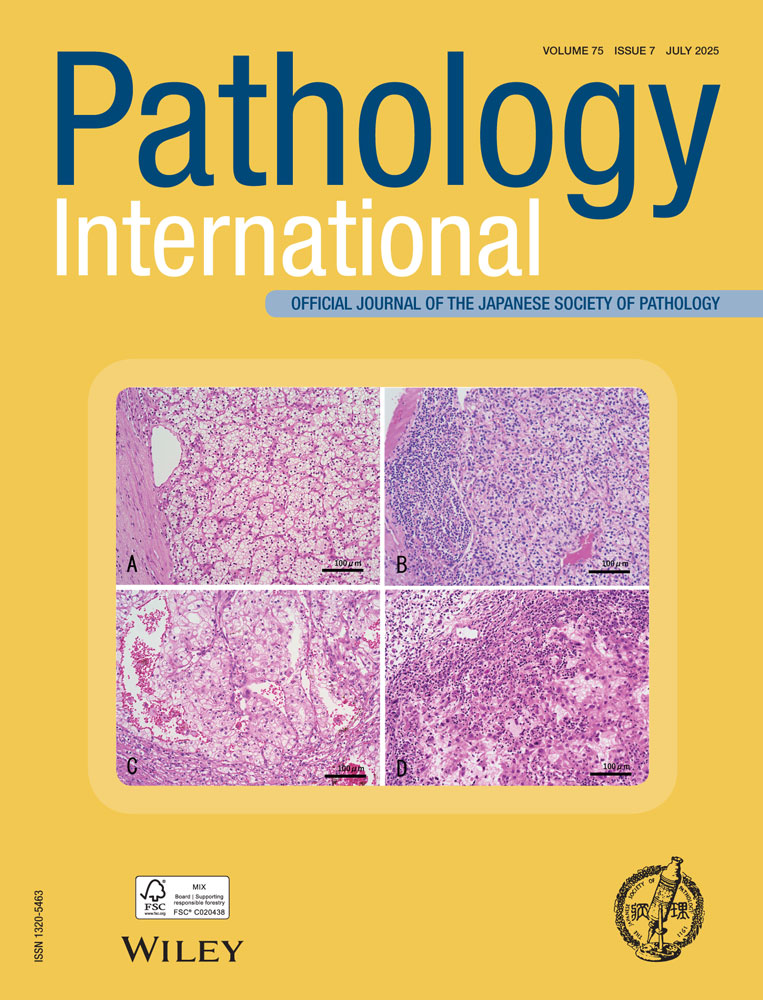Distribution of sialic acid-dependent carbohydrate epitope in thyroid tumors: Immunoreactivity of FB21 in paraffin-embedded tissue sections
Abstract
The reactivity of monoclonal antibody FB21, which recognizes a sialic acid-dependent carbohydrate epitope, was tested with 94 non-neoplastic and neoplastic thyroid tissue specimens using immunohistochemical methods on formalin-fixed, paraffin-embedded tissue sections. These specimens included 11 cases of adenomatous goiter, three cases of Basedow’s disease, 30 cases of follicular adenoma, 20 cases of papillary carcinoma, 15 cases of follicular carcinoma, six cases of medullary carcinoma, and nine cases of anaplastic carcinoma. FB21 reacted with 14 of 15 cases of follicular carcinoma that showed a microfollicular or trabecular pattern, and with nine of 20 cases of papillary carcinoma. A positive reaction was found on the cell surface membranes or apical parts of neoplastic follicles. FB21 also reacted with five of 30 cases of follicular adenoma. These cases showed a follicular pattern and positive staining pattern similar to that in follicular carcinoma. Adenomatous goiters, Basedow’s disease, medullary carcinomas, and anaplastic carcinomas were negative for FB21 reactivity. Although the different reactivities of FB21 with papillary carcinoma and follicular carcinoma remain to be investigated, the high frequency of reactivity with FB21 suggests that it may be useful as a complement to morphological diagnosis in follicular carcinoma.




